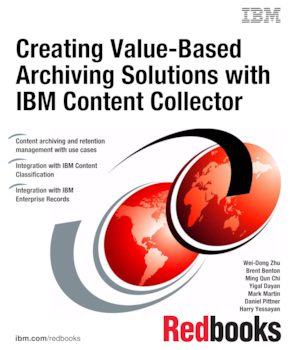
Published on 25 January 2013
Share this page:
ISBN-10: 0738437646
ISBN-13: 9780738437644
IBM Form #: SG24-8078-00
Authors: Wei-Dong Zhu, Brent Benton, Ming Qun Chi, Yigal Dayan, Mark Martin, Daniel Pittner and Harry Yessayan
Abstract
This IBM® Redbooks® publication describes how the IBM Content Collector family of products can help companies to create value-based archiving solutions. IBM Content Collector provides enterprise-wide content archiving and retention management capabilities. It also provides IT administrators with a high level of control over the archiving environment. From a common interface, organizations can implement policies that define what gets archived from which source system, make decisions about how content gets archived based on the content or metadata of the information, and determine the retention and governance rules associated with that type of content. Content Collector enables IT staff to implement granular archiving policies to collect and archive specific pieces of information.
IBM Content Collector helps with the following tasks:
- Eliminating point solutions and lowering costs with a unified collection, management, and governance approach that works effectively across a broad range of source systems and information types
- Appraising, improving understanding of, culling, and properly selecting the information to archive
- Retaining, holding, and disposing of archived content efficiently and defensibly
- Eliminating the costs and risks inherent with over-retention
Table of Contents
Chapter 1. Value-based archiving and defensible disposal overview
Chapter 2. Example use cases
Chapter 3. Dimensions of content archiving themes
Chapter 4. Designing, adapting, and deploying task routes
Chapter 5. Retention management
Chapter 6. Document classification
Chapter 7. Records management integration
Chapter 8. IBM Connections integration